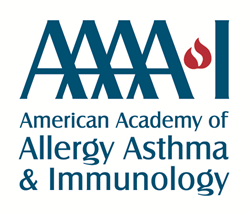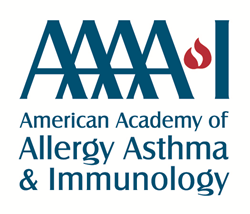
For clinicians, our findings provide an evidence base for the early identification of high-risk infants during a critical period of airway development—early infancy.
MILWAUKEE (PRWEB)
February 17, 2023
Bronchiolitis requiring hospitalization is associated with childhood asthma, and now researchers have identified nasal miRNAs present during severe bronchiolitis are linked to the risk of asthma development. Researchers will present their findings during the 2023 Annual Meeting of the American Academy of Allergy, Asthma & Immunology (AAAAI).
“While severe bronchiolitis developed during infancy is known to be a major risk factor for the development of childhood asthma, we still didn’t know what the exact mechanism linking these conditions was,” said Zhaozhong Zhu, ScD, primary author of the study. Researchers decided to examine the longitudinal relationship between the risk of asthma development and nasal airway microRNAs (miRNAs) during severe bronchiolitis.
Researchers examined data from 575 infants with sever bronchiolitis across 17 centers, profiling their nasal miRNA using small RNA sequencing. They looked at the relationship between miRNAs and the risk of developing asthma by the age of six. Researchers identified 23 differentially expressed miRNAs, which were associated with 13 clinical features related to asthma, infant eczema and corticosteroid use during hospitalization.
The pathway analysis showed these DEmiRNAs were enriched in asthma-related pathways—e.g., toll-like receptor, phosphatidylinositol 3‑kinase-protein kinase B, and Fc-epsilon receptor signaling pathways. These results indicated that these miRNAs play key roles in mechanisms relating to asthma, such as innate immunity, airway remodeling, and IgE regulation.
“We found a complex interplay between nasal miRNA, virus, asthma risk factors, and their longitudinal relationship with asthma development,” Dr. Zhu said. “For clinicians, our findings provide an evidence base for the early identification of high-risk infants during a critical period of airway development—early infancy. For researchers, these observations should facilitate further understanding of the interplay between virus and host and their contribution to asthma, and also further investigations into the development of miRNA-targeted strategies for asthma prevention in infants with severe bronchiolitis—a population with substantial morbidity burden.”
Visit aaaai.org to learn more about asthma. Research presented at the AAAAI Annual Meeting, February 24-27 in San Antonio, Texas, is published in an online supplement to The Journal of Allergy and Clinical Immunology.
The American Academy of Allergy, Asthma & Immunology (AAAAI) is the leading membership organization of more than 7,100 allergists, asthma specialists, clinical immunologists, allied health professionals and others with a special interest in the research and treatment of allergic and immunologic diseases. The AAAAI is the go-to resource for patients living with allergies, asthma and immune deficiency disorders. Established in 1943, the AAAAI has more than 7,100 members in the United States, Canada and 72 other countries. The AAAAI’s Find an Allergist/Immunologist service is a trusted resource to help you find a specialist close to home.
Share article on social media or email:

